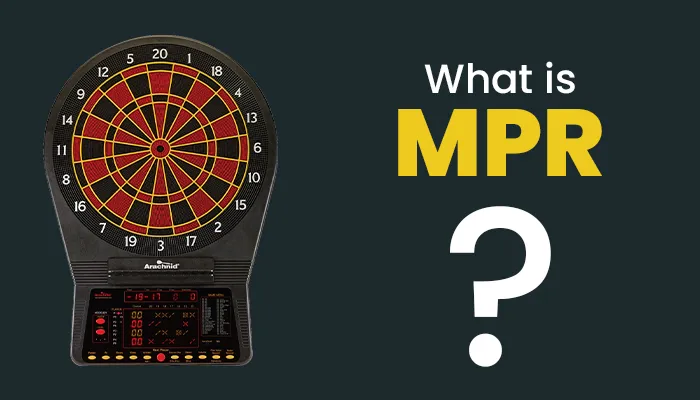You’ve heard it mentioned during televised darts matches and maybe wondered what it means—MPR. MPR stands for marks per round and it’s one of the most important stats in darts. If you want to understand the game and player performance better, you need to know what MPR measures and why it matters.
MPR calculates the average number of marks a player scores in each visit to the oche. The higher the MPR, the more accurate and consistent a player is throwing at the board. The best players in the world have an MPR of over 100, meaning they average more than one treble 20 or other high-value shot per turn.
MPR gives you an objective way to compare players and see who has the hot hand on any given day. It also shows you who the most accurate and dangerous players are overall. The next time you watch darts on TV or follow live scoring online, pay attention to the MPR numbers—they reveal a lot about who’s dominating at the board. MPR is a simple stat but a very telling one.
Understanding Marks Per Round (MPR) in Darts
MPR refers to the average number of marks (points) a player scores in each round (visit) to the oche (throw line). The higher your MPR, the better – it means you’re scoring more points each round, so you’ll finish games faster.
To calculate your MPR, simply add up all the points you scored in a match and divide by the number of rounds you threw. For example, if you scored 450 points over 15 rounds, your MPR would be 450/15 = 30. The top pros average well over 100 MPR.
Some tips to increase your MPR:
- Aim for the triple 20 (T20) and bullseye (50/25 points)
- Finish games as quickly as possible. The fewer darts you throw, the higher your MPR will be.
- Practice your grouping. The closer your darts land together, the more points you’ll score per round.
- Focus on accuracy over power. Precision and consistency are key.
- Learn proper throwing techniques. A smooth release and follow-through will lead to tighter groupings and higher scores.
Keep practicing and focus on precision, and your MPR is sure to climb. A higher MPR means you’re becoming a better, more accurate player – and that’s really the point, isn’t it?
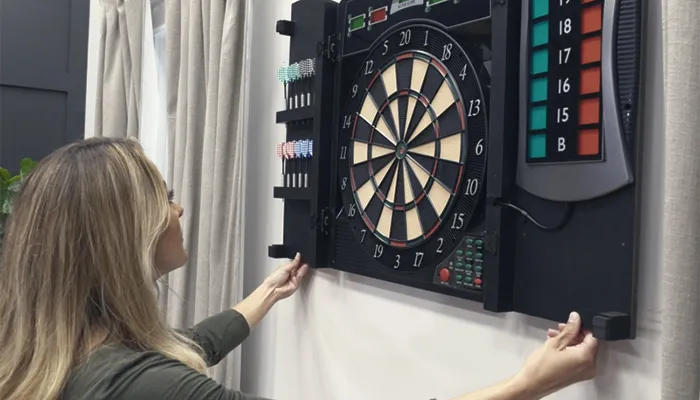
What is a Good MPR in Darts?
So what counts as a good MPR in darts? The average recreational player can expect to achieve an MPR of around 15 to 25. For most casual players, staying in this range means you have a solid grasp of the fundamentals and are enjoying yourself.
If you’re getting into the mid 20s to low 30s, you’re developing into a strong player and probably play regularly in local competitive matches or leagues. Scoring over 30 points per round requires precision, focus, and consistency – well done!
Reaching up into the 30s and low 40s means you have real skill and talent. You’re likely competing at a high level in your area. Over 40 MPR is world-class territory, seen on televised pro circuits. At this level, players demonstrate an unparalleled mastery of timing, release, and follow through.
Of course, your MPR will vary each round and match. Don’t get too caught up in the numbers. The most important thing is focusing on fundamentals, quality practice, and enjoying this exciting game of precision and accuracy. Keep at it and your MPR will rise over time as your skills improve!
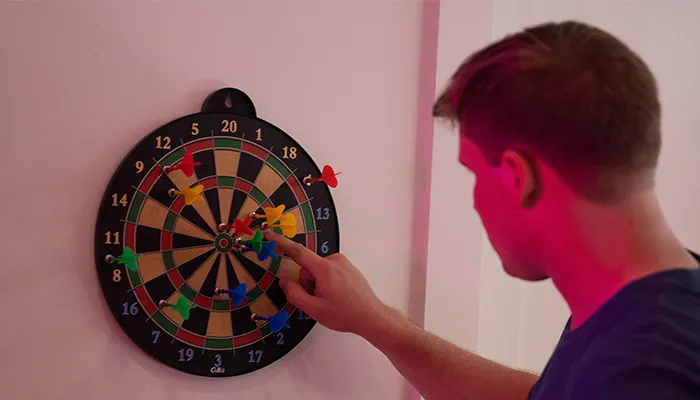
How MPR Is Calculated in Professional Darts
In pro darts, a player’s three-dart average, commonly known as their MPR, is calculated by dividing the total points scored in a round by three. For example, if a player scores 60, 50 and 45 points with their three darts, their MPR would be 51.67 (155 points divided by 3 darts).
The MPR provides a snapshot of a player’s scoring power and consistency during a match. The higher the MPR, the better, with the top players averaging well over 100 MPR during major televised events. Over the course of an entire match, a player’s MPR may fluctuate up and down for many reasons, including:
- The difficulty of each round’s checkout (finishing double required)
- The position of each round’s starting double on the board
- The pressure of the match situation (final round vs early round)
- The player’s confidence and focus level at that moment
While MPR is an important metric, it doesn’t tell the whole story. Other factors like finishing prowess, mental toughness, and experience also play a role in determining the outcome of a match. But in general, the player with the higher MPR over the long run will have a competitive advantage.
MPR is one of the most commonly used statistics for analyzing performance and comparing players in the sport of darts. It provides an objective measure of a player’s scoring skill that all fans can understand and appreciate.
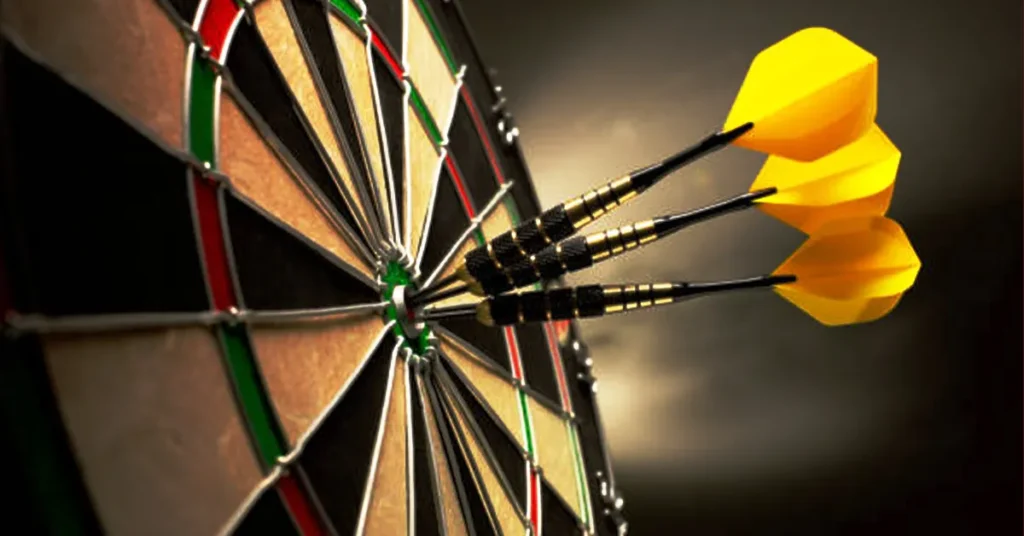
How MPR Is Calculated in Professional Darts
MPR, or Marks Per Round, is one of the most important metrics for measuring performance in darts. It shows how accurate and consistent a player is over the course of an entire round or match.
Why MPR Matters
A high MPR means you’re hitting your targets regularly and racking up points. The more marks you get per round, the higher your score will be. A low MPR means you’re struggling with accuracy and missing the board more often, so your score suffers.
To improve your game, you need to focus on raising your MPR. Some tips:
- Practice the fundamentals like stance, grip, and release. Consistency is key.
- Aim small, miss small. Pick out exact targets on each section to hit.
- Start close to the board and move back as your accuracy improves.
- Play a lot! The more you play, the more your muscle memory will improve.
- Try different darts to find the right weight and grip for you. The darts that feel most comfortable and natural will yield the best results.
Your MPR provides an objective measure of how you’re progressing in the game of darts. Whether playing casually with friends at the pub or competitively in a league, tracking your MPR will help motivate you to refine your technique and become a better player. Keep at it, and watch your score and ranking climb!
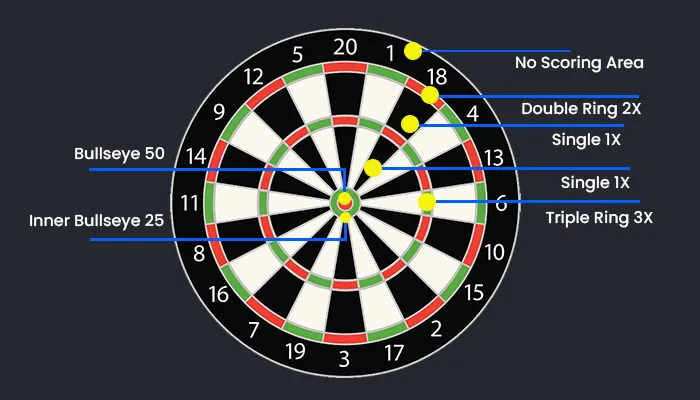
In Which Dart Game MPR Applied
MPR, or Marks Per Round, is used in a variety of dart games, especially those involving multiple players. The player with the highest MPR at the end of the game wins.
501
The most popular dart game using MPR is 501. In 501, each player starts with 501 points and subtracts the score of each throw from their total. The first player to reach exactly 0 points wins. At the end of each round (or leg), the MPR is calculated by dividing the total points scored in the leg by the number of darts thrown. The player with the highest MPR after a predetermined number of legs, usually 3 to 5, is the winner.
Having a high MPR in 501 requires accuracy, as each point matters in reaching zero as fast as possible. Precision aiming for the triple and double points zones of the board is key. Aim small, miss small. Keep practicing, analyze your technique, and your MPR is sure to improve over time.
301
Another dart game that applies the concept of MPR is 301. In 301, each player starts with 301 points and aims to reach exactly zero by subtracting the score of each throw from their total. Similar to 501, the player with the highest MPR at the end of the game emerges as the winner.
The key to achieving a high MPR in 301 lies in accuracy and strategic decision-making. Every dart thrown counts, so precision aiming and smart shot selection are crucial.
Other games that use MPR include ‘Cricket’ and ‘Around the World.’

Using MPR Data to Improve Your Darts Game
To improve your darts game, analyzing your marks per round (MPR) stats can be extremely helpful.
Review Your MPR After Each Round
After finishing a round of darts, review how many marks you scored in that round. This includes any points you earned from hitting the board, whether singles, doubles, or triples.
Compare your MPR to the maximum possible score for that round to see your accuracy percentage. For example, if you scored 32 points in a round of 501, your MPR was 6.4.
Track Your MPR Over Time
Monitoring your MPR over multiple games and weeks can reveal trends in your performance. You may notice certain days of the week or times of day when your MPR seems to drop. Look for any patterns to better understand what may be impacting your focus or consistency. An increasing MPR over time shows your skills are improving!
Set MPR Goals
Establishing a target MPR to work towards will give you motivation and help track progress. Even increasing your MPR by 0.5 to 1 point per round can add up to big gains over many games. Start with small, achievable goals, then increase them as your abilities improve.
Practice the Shots You Miss Most
Review which numbers you struggle to hit the most based on your MPR stats. Spend extra time practicing those trickier shots to boost your accuracy. For example, if you frequently miss the bullseye or struggle with double 16, focus your practice on the more challenging areas of the board.
Monitoring and improving your MPR is key to upping your darts skills over the long run. With regular practice and analysis of your stats, you’ll be hitting more marks in no time!
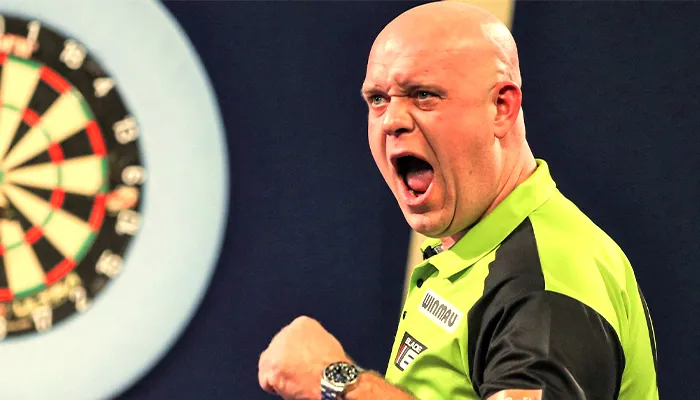
Tracking and Increasing Your MPR Over Time
Tracking your marks per round (MPR) over time is key to improving at darts. As you play more, focus on increasing your MPR gradually through consistent practice and technique.
To track your MPR, simply divide the total points scored in a round by the number of darts thrown. For example, if you score 90 points over 3 darts, your MPR is 30. The higher your MPR, the more accurate and consistent you are becoming.
A good beginner goal is an MPR of 20-30. As you improve, aim to increase this by 1-3 points per week or two. Don’t get discouraged if you plateau or drop at times. Look for small ways to boost your average like focusing on the bullseye or switching up your stance. Muscle memory takes time.
Beyond just throwing more, work on fundamentals like grip, release, and follow through. A smooth release and straight follow through will tighten your groupings over time. Try different grips and stances to find what’s most comfortable and accurate for you.
Record your MPR over time to stay on track. Some ways to do this include:
- Keep a notebook and log each round’s details.
- Use a free dart average tracker app to input your scores.
- Take photos of your scores to look back on your progress.
With regular practice, tracking your MPR, and making small adjustments, you’ll be hitting higher scores in no time. But remember, increasing your average is a marathon, not a sprint. Stay patient and consistent, the results will come!
What is PPD and PPR in Darts?
PPD and PPR are two key metrics used to track a player’s performance in darts.
PPD (Points Per Dart)
PPD refers to the average number of points a player scores with each dart thrown. The higher the PPD, the more accurate and consistent the player. PPD provides an objective measure of a player’s skill level and performance. The top PPD for professionals is around 3.5 to 4 points per dart.
PPR (Points Per Round)
PPR measures the total points scored by a player in a single round of 501, Cricket or any other 01 game. It indicates how well a player is scoring in each round. A player with a high PPR, especially at crucial points in the game, has a better chance of winning. For top players, a PPR of over 140-160 in a typical round is common.
Monitoring your PPD and PPR is a great way to track your progress and make improvements to your game. A gradual increase in these numbers over time means you’re becoming a more accurate, consistent and higher-scoring player.
FAQs
You probably have some questions about MPR in darts. Here are some of the common FAQs:
Conclusion
You now know everything you need to know about MPR in darts. It’s a simple metric but an important one to understand as you start tracking your stats and progress. Focus on keeping your averages up, learn which outs you need to practice, and work on closing out those legs as efficiently as possible.
The more you play, the more your MPR will become second nature. Before you know it, you’ll be hitting the triple 20 like a pro and averaging over 50 MPR in no time. Keep practicing, keep consistent, and keep having fun – that’s what darts is all about!
The bullseyes and 180s will come with experience. For now, just focus on the fundamentals and enjoy this awesome game. You’ve got this! Go get ’em, tiger!

